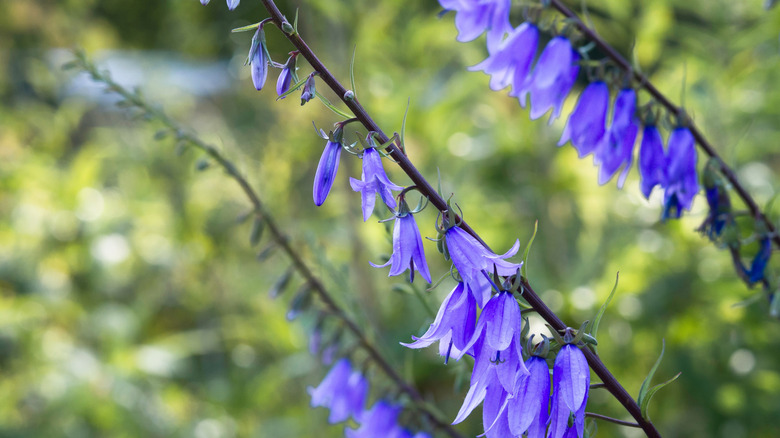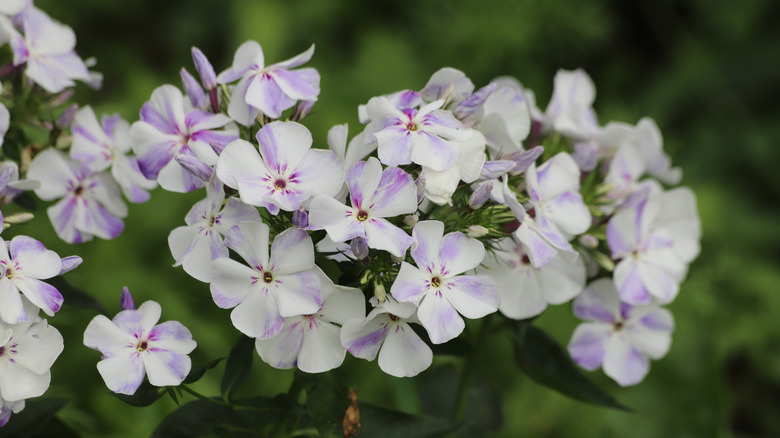Why Creeping Bellflower Could Ruin Your Gorgeous Garden
While creeping bellflower can bring beautiful perennial purple flowers to the garden, you'll likely grow very tired of this aggressive spreader very quickly. Creeping bellflower (Campanula rapunculoides) is considered an invasive plant in Minnesota and most other parts of North America because it doesn't just creep – it can take over. While you can try to stop weeds from taking over, its roots grow out in all directions, crowding out other plants.
Creeping bellflower is just one of many fast-growing purple-flowered plants that can invade your lawn or garden. Bellflowers grow as tall as 3 feet, and bloom in the summer and fall. Their green leaves are heart-shaped and their flowers resemble bells that grow along one side of the plant's stalk. While creeping bellflower can be beneficial to bees and butterflies, it can wind up harming them if it hogs the flower bed and kills off more nutritious flowers in the garden.
You never know when this adaptable plant might pop up in the garden since it's not too fussy. It spreads quickly through seeds and rhizomes, which are underground stems that grow horizontally instead of vertically. Yet, a single stalk of purple bell-shaped flowers can carry 15,000 seeds. So it's no wonder this flower propagates so quickly. If you're pulling creeping bellflower by hand, you need to be sure to carefully contain and dispose of any old plants, and don't leave them in the garden or they'll multiply faster than you can ring a bell.
How to contain creeping bellflower
The best way to get rid of creeping bellflower might be to pull it by hand since this hardy weed is resistant to many herbicides. But, even hand-pulling isn't fool-proof because this versatile plant will grow back to its former glory if you leave even a portion of the root in the ground. Once you do manage to get rid of this aggressive grower, you should try planting something in its place.
If you don't want a garden full of invasive creeping bellflower, try out its noninvasive cousin, American bellflower (Campanula americana). It's a less aggressive grower than creeping bellflower but offers similar pretty purple flowers. American bellflower is one of many native plants in Mississippi, as well as many other states, including Georgia, Illinois, and New York. It thrives in USDA Plant Hardiness Zones 4 through 8. And American bellflower's blooms are slightly different than the ones produced by the creeping bellflower – opening to flat, five-petaled purple stars.
Another great option besides the creeping bellflower is creeping phlox (Phlox stolonifera). While they might share "creeping" in their name, creeping phlox is a much less aggressive ground cover. Even though creeping phlox does spread, it doesn't elbow out all other plants the way creeping bellflower does. It blooms a pretty carpet of pink, blue, white, or purple flowers. This ground cover thrives in zones 5 through 8 and doesn't mind slightly acidic soil. It's also helpful that creeping phlox is the gorgeous purple ground cover that butterflies adore!

